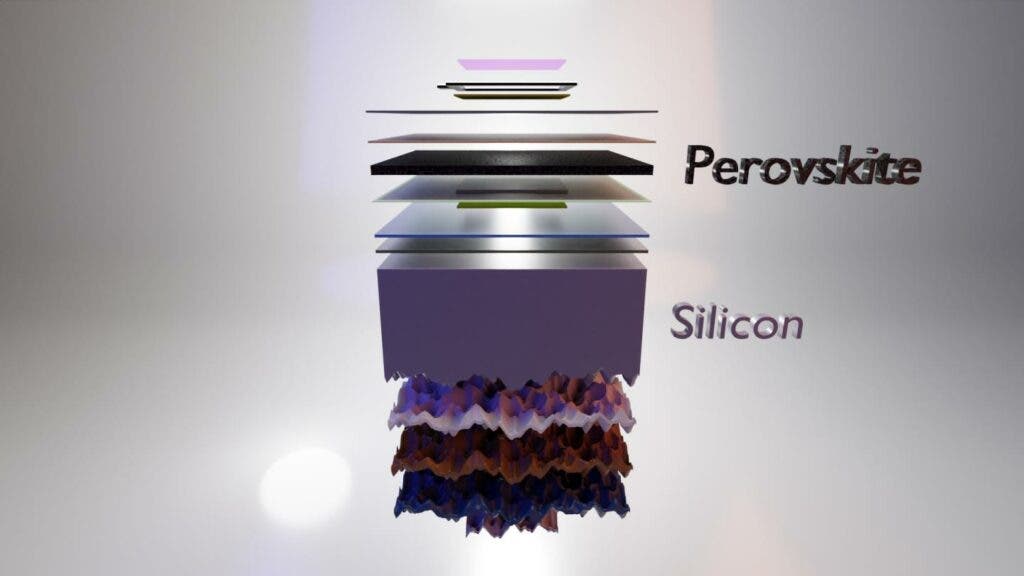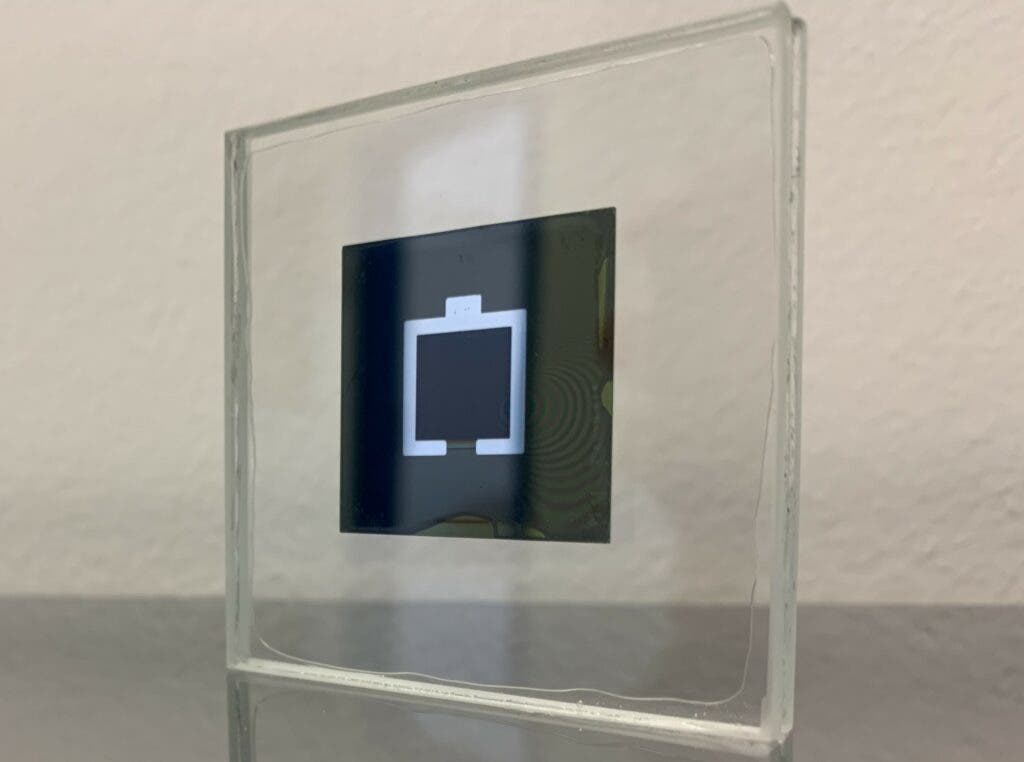
A crystal known to science for more than a century has only in recent years become recognized for its use in harvesting solar power. Since the first successful usage of perovskite in solar cells in 2009, the advances in the field have grown exponentially. In just a few years of development, rated efficiency in the lab for perovskite solar cells soared from 3.8% to nearly 20%. Now, scientists at Helmholtz-Zentrum Berlin (HZB) have paired perovskite with silicon in a hybrid solar cell that harvested photons with an impressive 29.15% efficiency — a new world record that may propel the industry to new heights.
Solar cells convert incoming photons into electricity by exploiting the electron-hole pair generation and recombination. When photons come in contact with the semiconducting material, and if their energy falls into the semiconductor bandgap, then an electron is offset, leaving a gap in the atom. The electron travels from atom to atom within the material, each time leaving behind a hole and occupying holes downstream until it eventually reaches an electrode and has its charge transferred to a circuit. This is when electricity is finally generated.
The key is to have electrons moving for as long as possible, and thanks to its diffusing capabilities, perovskite can theoretically generate more electricity. Perovskite solar cells have many distinct advantages over traditional silicon cells. Firstly, the fabrication of perovskite photovoltaics is much cheaper and simpler than silicon photovoltaic cell production. Additionally, perovskite cells have a higher bandgap than traditional silicon or thin-film cells.
Because perovskite thin films are transparent, they can be placed on top of lower bandgap cells like silicon. The result is a hybrid or “tandem” photovoltaic system. Stacking two solar cells one on top of the other in this manner allows a larger portion of solar energy to be converted into electricity.
One of the most common solar panel myths is that solar energy is expensive. But according to the International Energy Agency, solar is now ‘the cheapest electricity in history’. Tandem solar cells will dramatically lower both the price of installation and your electrical bill even further.

More than 50 years ago, William Shockley and Hans-Joachim Queisser discovered the Shockley-Queisser limit, which is the efficiency ceiling of solar cells with only one single layer. For both silicon and perovskite, the theoretical limit is around 30%. For tandem cells the theoretical limit is about 35%.
However, in the real world single-layer silicon or perovskite solar cells usually don’t convert more than 20% of the solar energy they receive. This is why the new tandem cell developed in Germany — which uses a perovskite composition with a 1.68-eV band gap — is so impressive, clocking in nearly 30% efficiency, just 5% shy of the absolute theoretical limit.
The solar cell developed by the researchers led by Steve Albrecht and Bernd Stannowski was tested in the lab on a sample measuring only 0.2 cm by 0.2 cm (1 cm2 ), but it should be quite easy to scale up the size. Next, the HZB team wants to break the 30% efficiency barrier. Albrecht says that initial ideas for this are already under discussion.
The findings appeared in the journal Science.


